Rotterdam Central District - Rotterdam
For the O-team, part of the Ministry of the Interior, DELVA carried out design research into the possibilities of transforming the Rotterdam Central District into Rotterdam’s urban jungle. The RCD is the area around the station and extends from Pompenburg to Henegouwerlaan and is one of Rotterdam’s most important development locations. The area has a hard and stony character and is characterised by inactive ground floors and little street life. DELVA investigated how this grey world can evolve into a new green urban biotope for humans and animals and what development principles aimed at greening are applicable here and how it can become an inseparable part of urban development.
Importance of greenery in the city
Greenery in the city is often seen as beautiful, fun and recreational. However, it is often forgotten that this green space plays a crucial role in keeping our cities liveable and provides a solution to the rapidly changing climate. Among other things, healthy green ecosystems provide clean air, they cool the city, prevent flooding through infiltration and evaporation and have a positive impact on the health of residents.
In addition, the urban environment also provides an interesting habitat for various species of flora and fauna. The urban area is in many cases more ecologically interesting and biodiverse than the surrounding grassland. The city forms a nutrient-rich biotope, with fewer natural predators, fewer agricultural toxins and a diverse pallet of conditions: wet versus dry, light versus dark, hot versus cold. It is up to the city’s future designers to design the city as an inclusive place that is resilient for the future. A biotope for humans, flora and fauna.

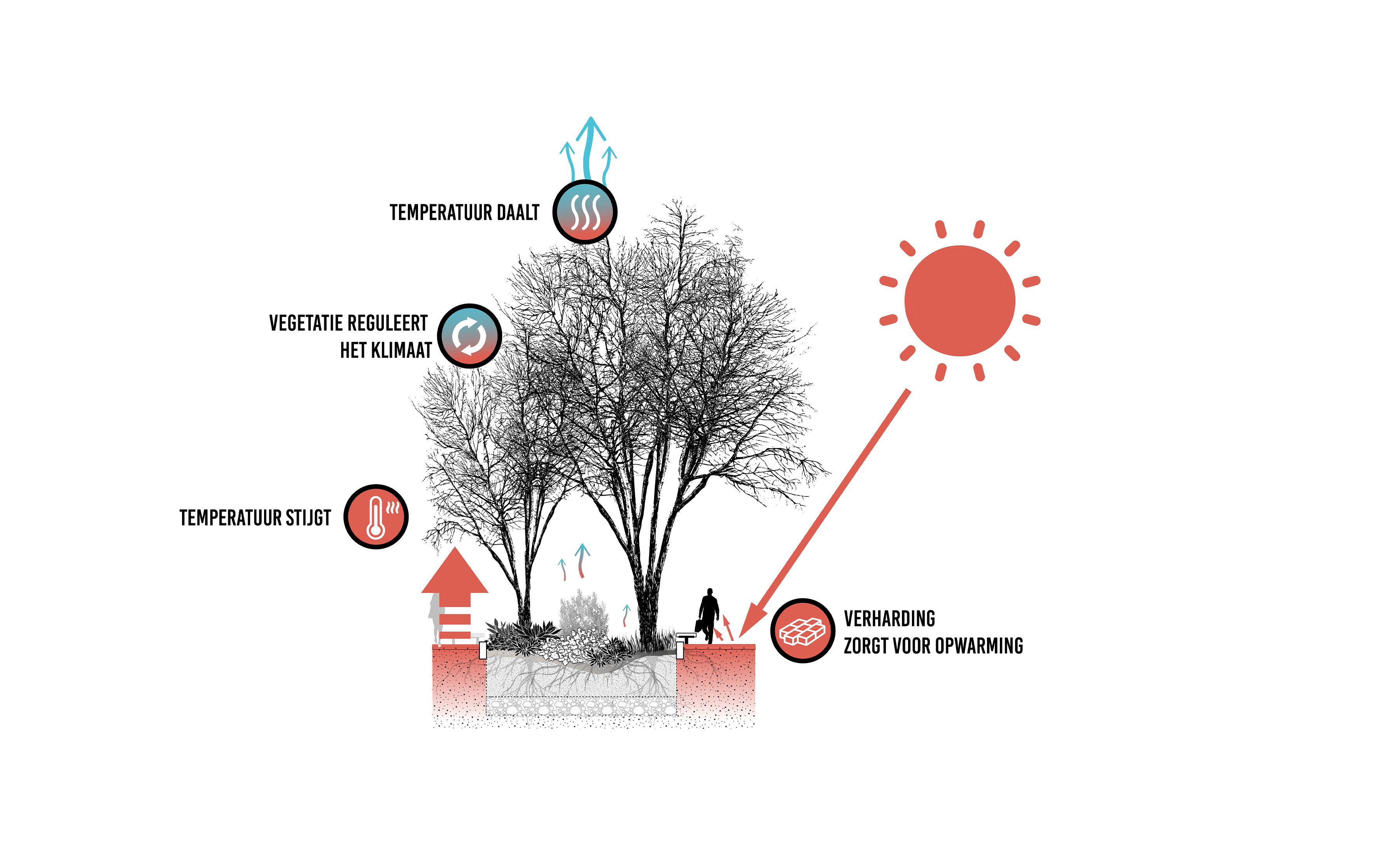
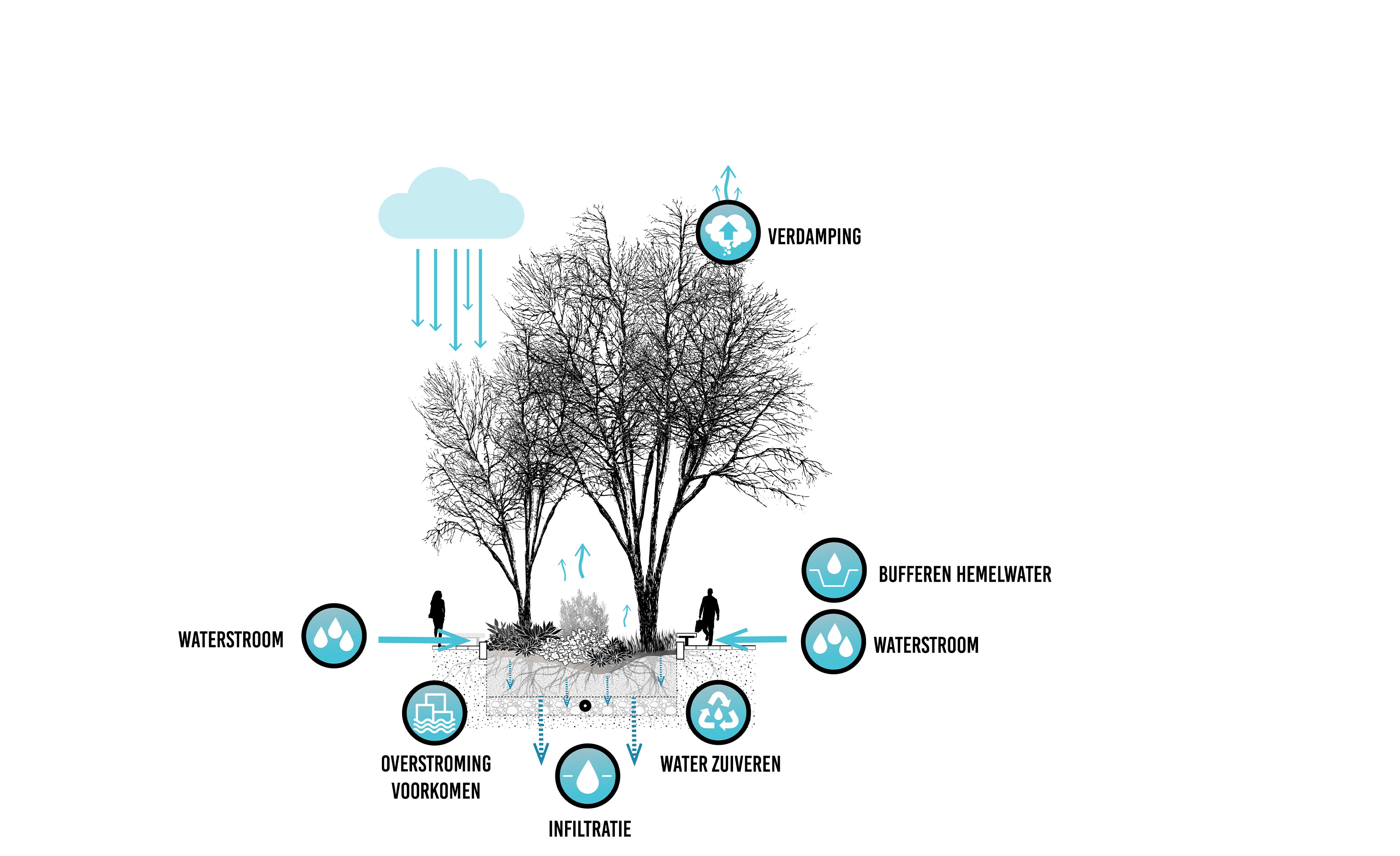
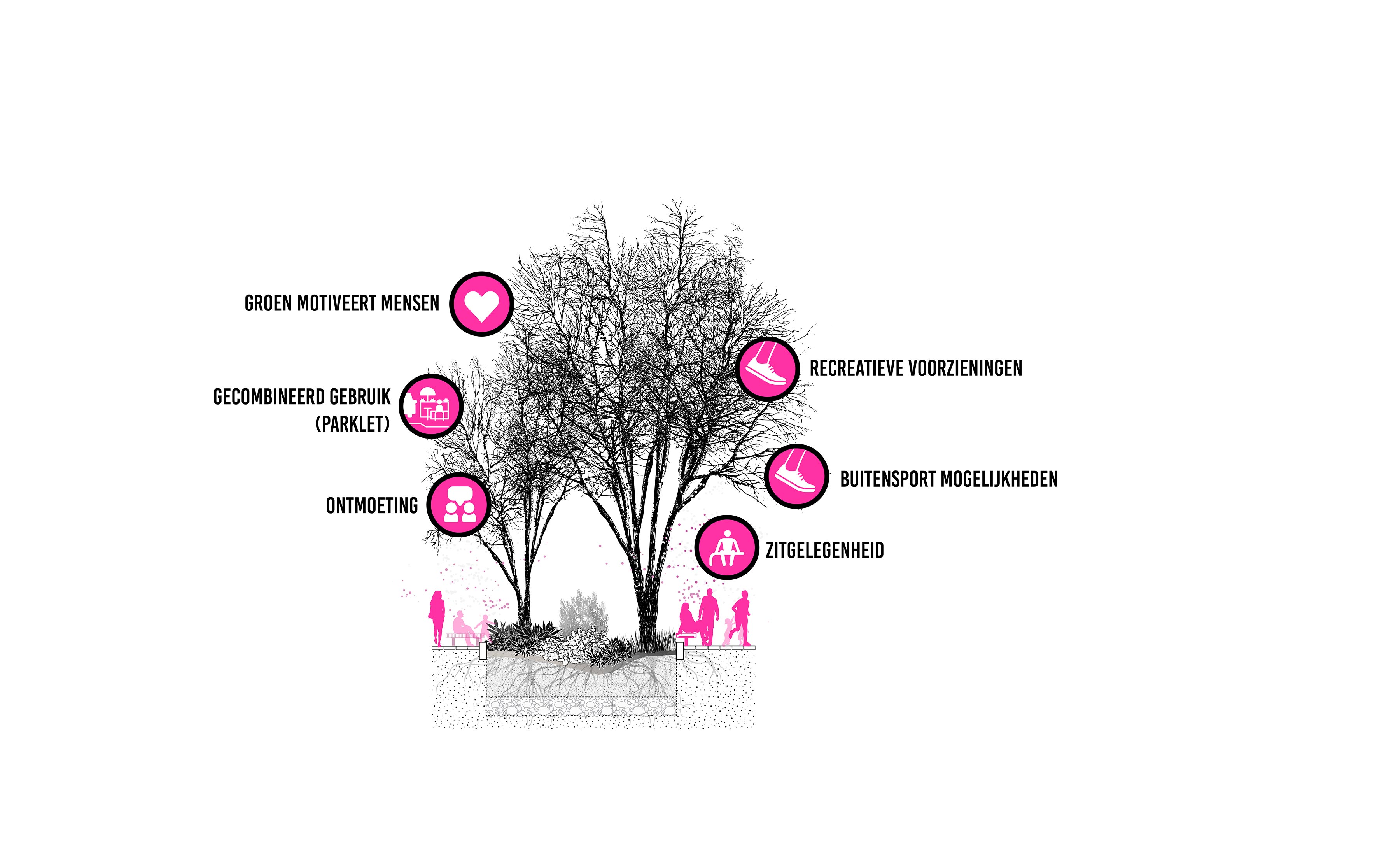
The Rotterdam Central District
The RCD is not the first place you think of when it comes to creating an urban jungle. It has a high building density, the public space is dominated by traffic and is predominantly paved. As a result, there is hardly any space for greenery and it constitutes one of the hottest places in Rotterdam.
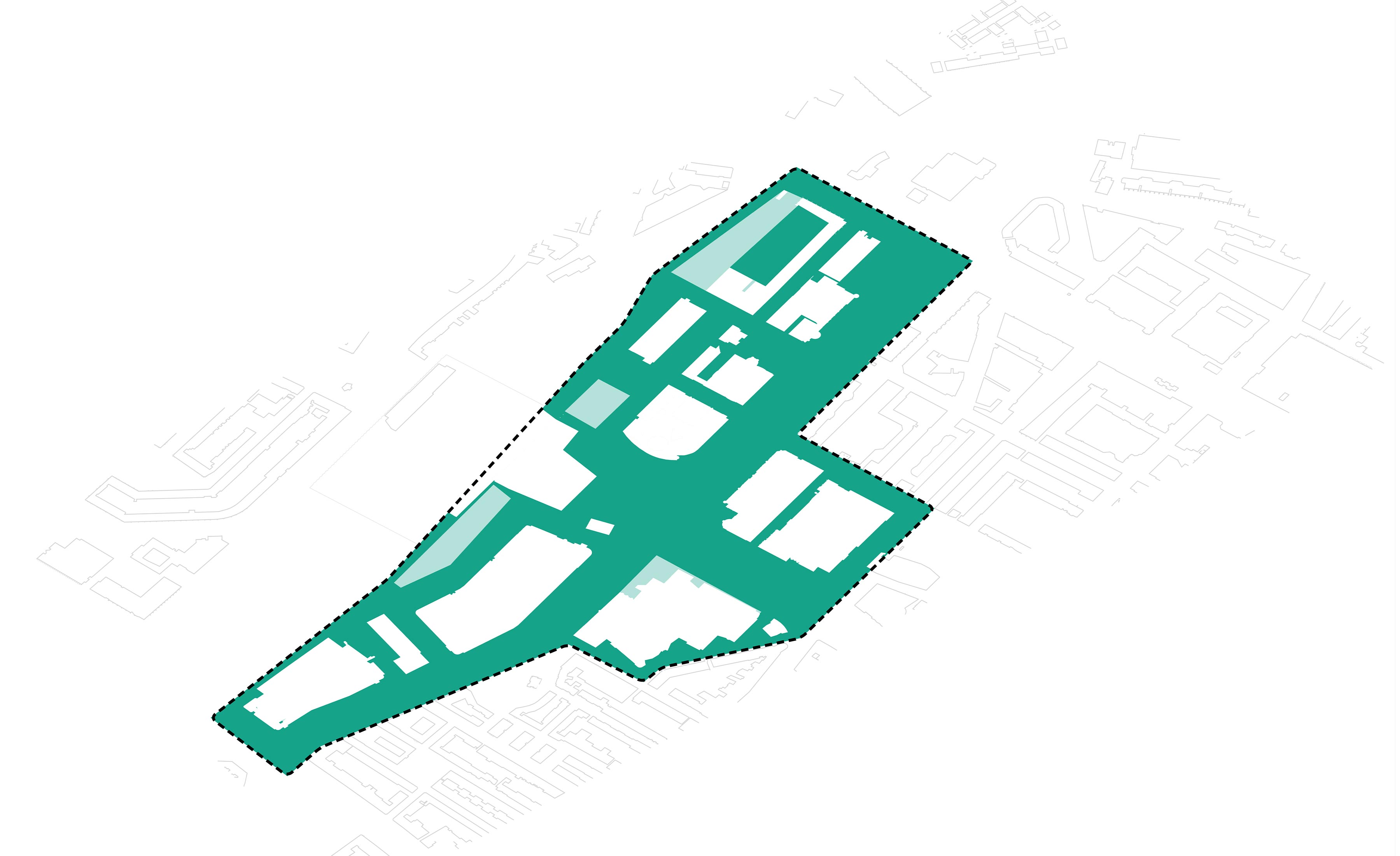
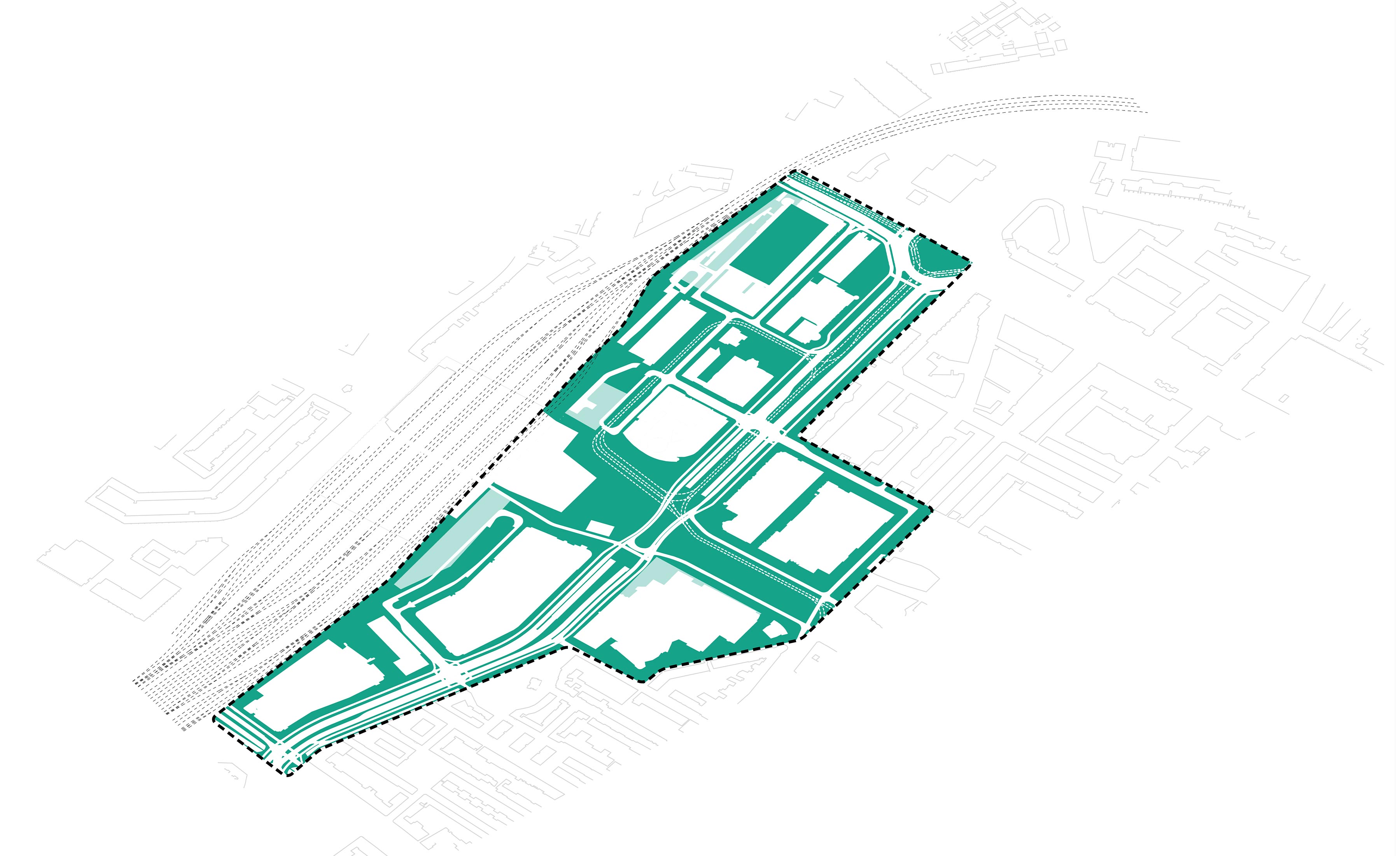
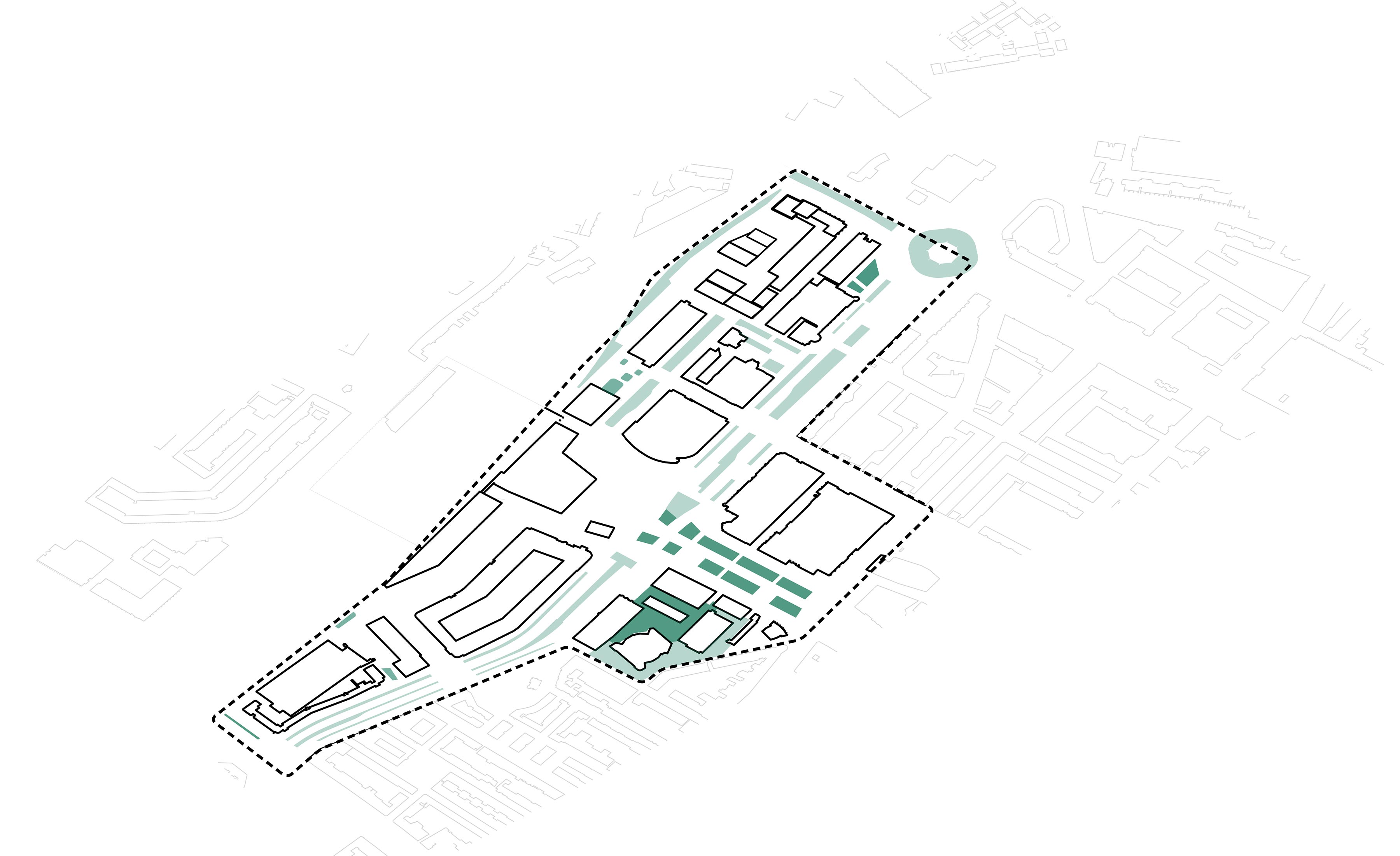
We cannot achieve transformation by limiting ourselves to the ground level. Collectives and systems, where public space and the built environment work together, should be considered. Maximum softening of the ground level and greening of the buildings in strategic places creates series of green spaces, which relate to each other both horizontally and vertically and together form a green network in this urbanised environment.
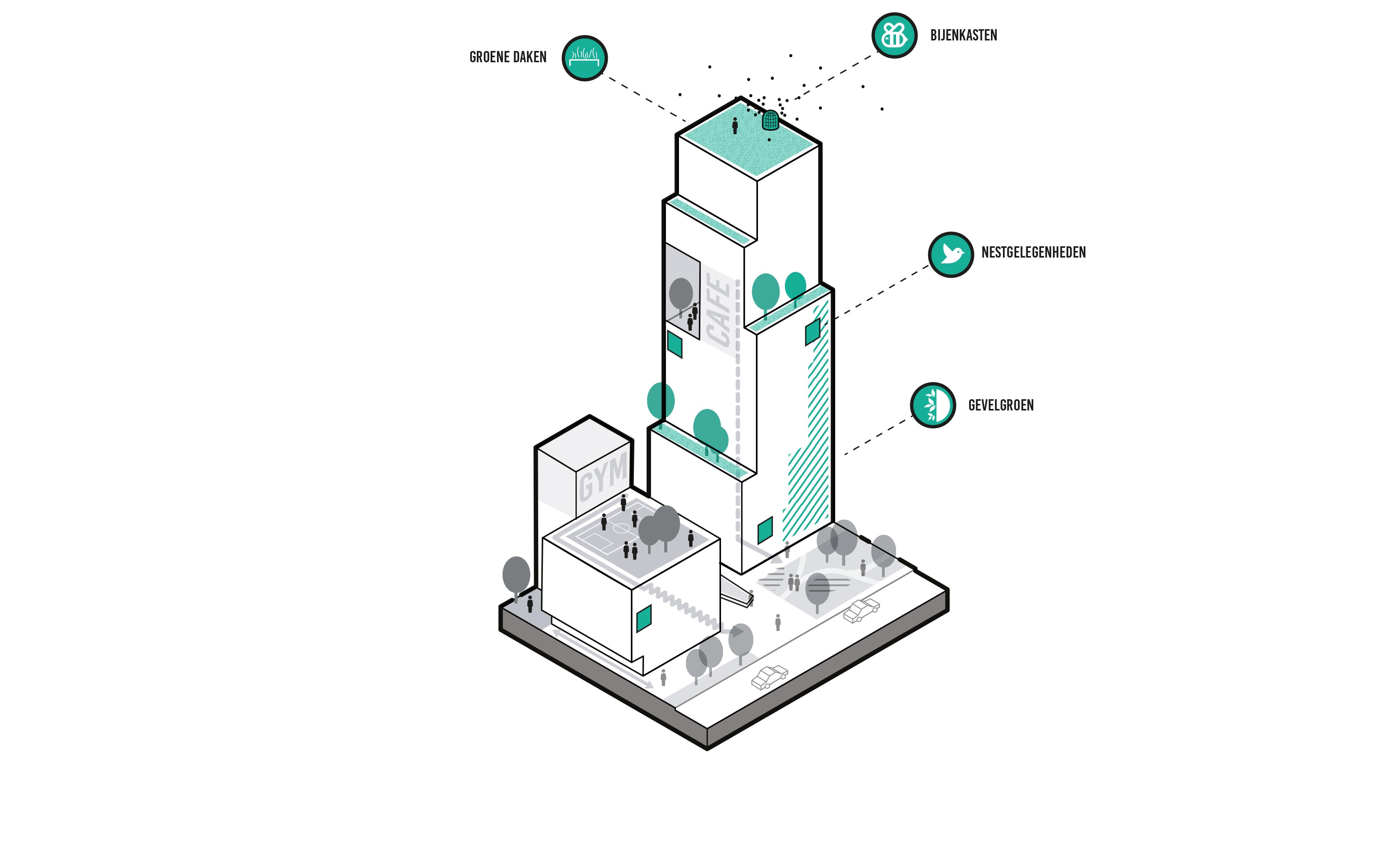
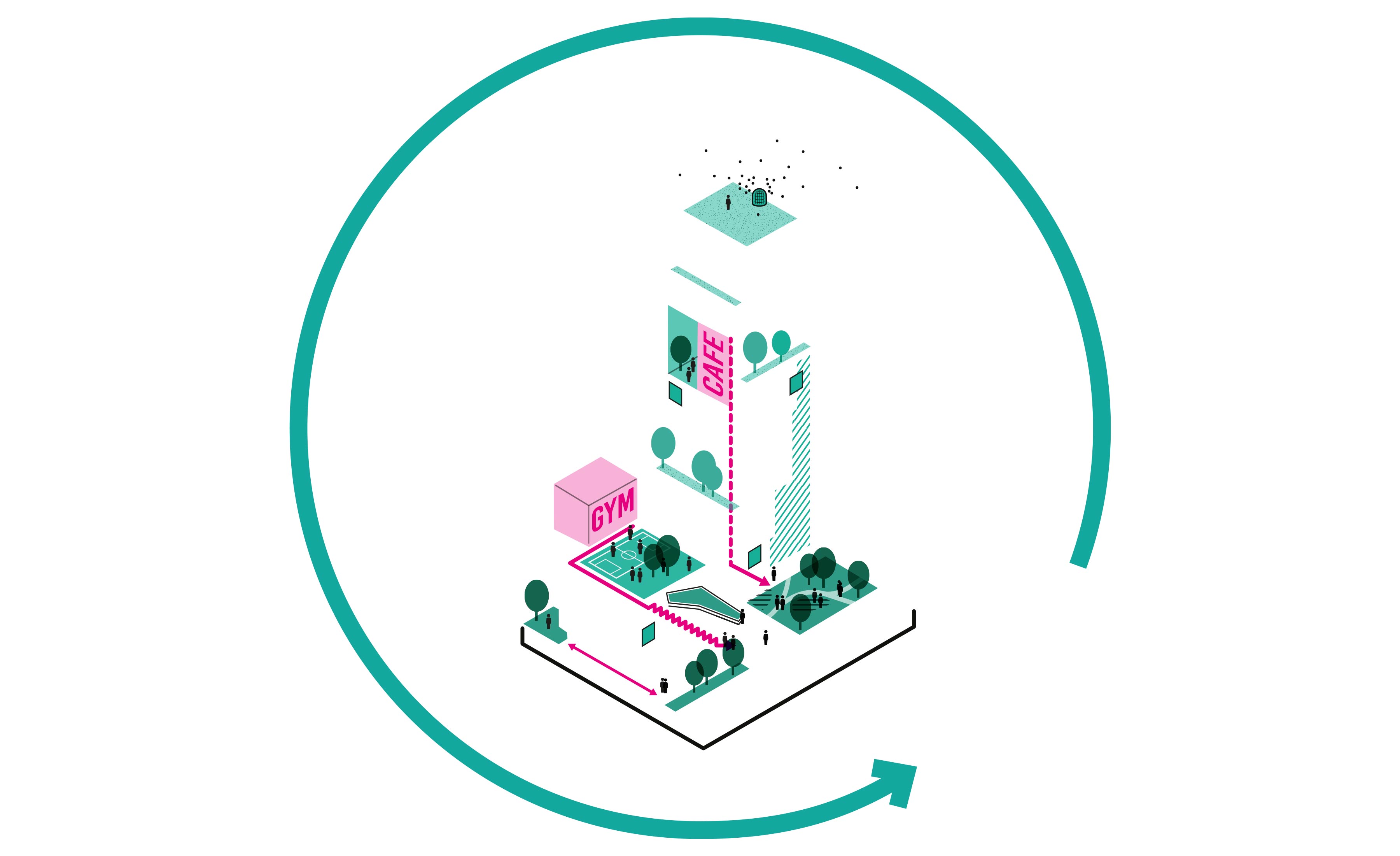
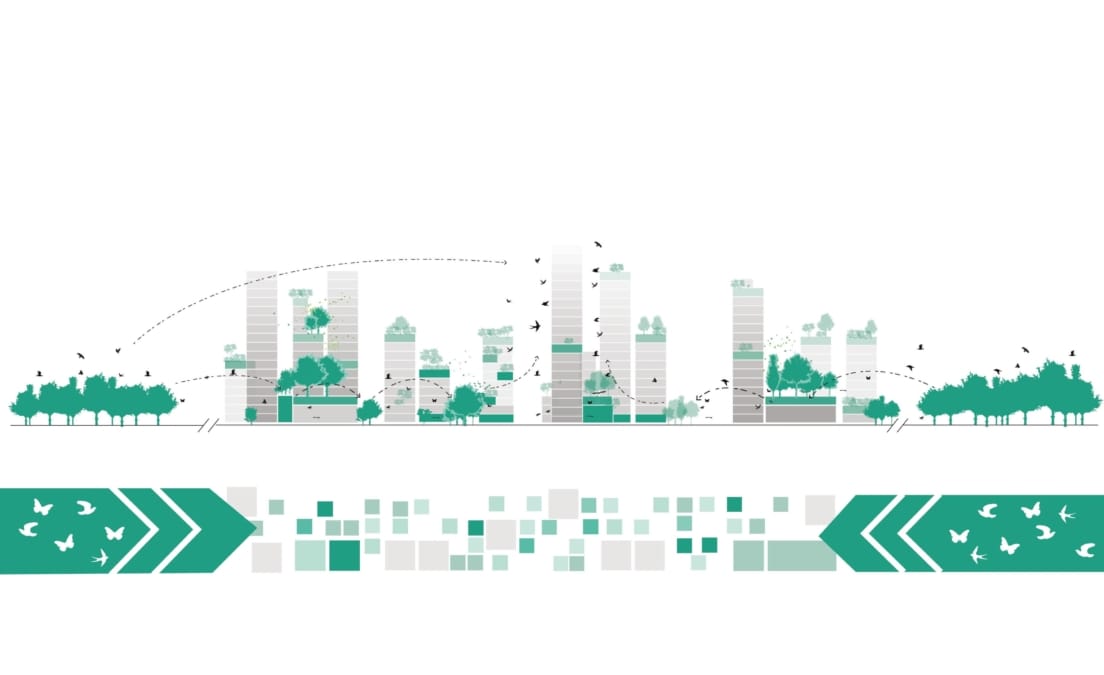
Greenwashing
However, we see that qualitative greening of buildings is still in its infancy and good examples are scarce. Green roofs and nature-inclusive designs are presented in almost all tenders, but really good Dutch examples are still lacking. This is mainly because greenery is often a final cost item and one of the first elements to be cut. If it doesn’t happen during design, it is often taken out later because of management costs. During a workshop with landscape architects from the four major cities, this was confirmed and possible solutions were discussed. Several solutions have been put forward to make greenery an integral part of area development:
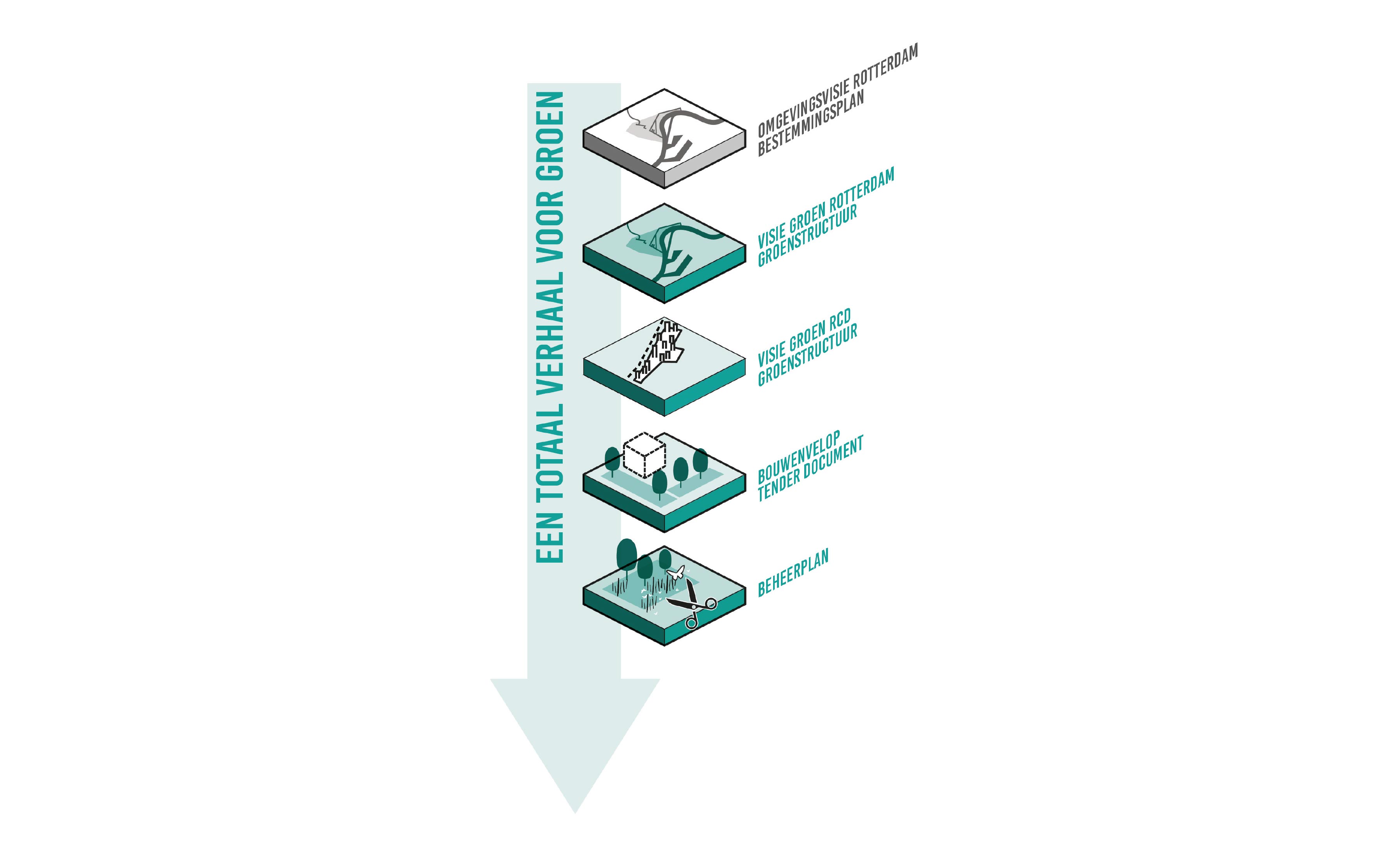
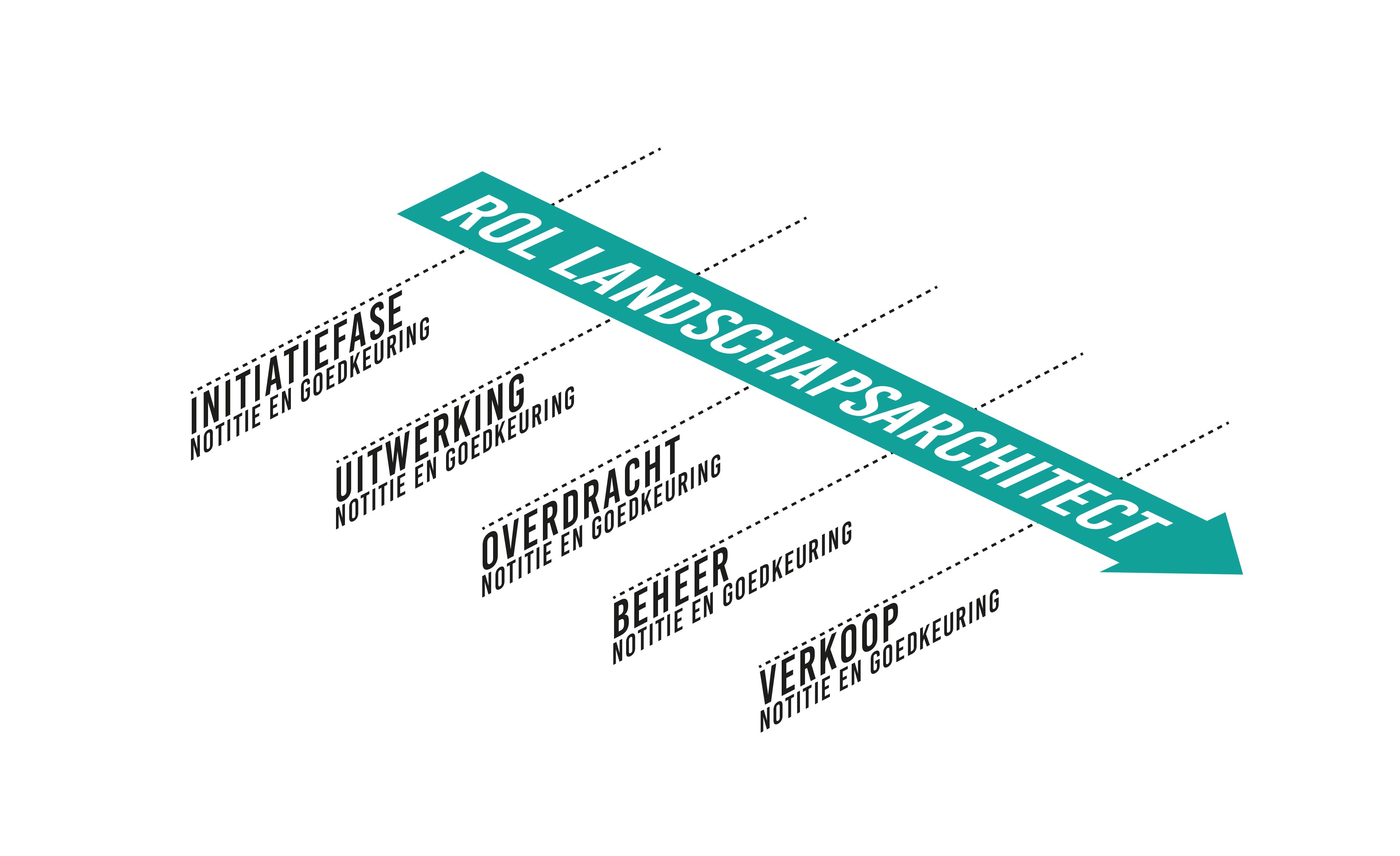
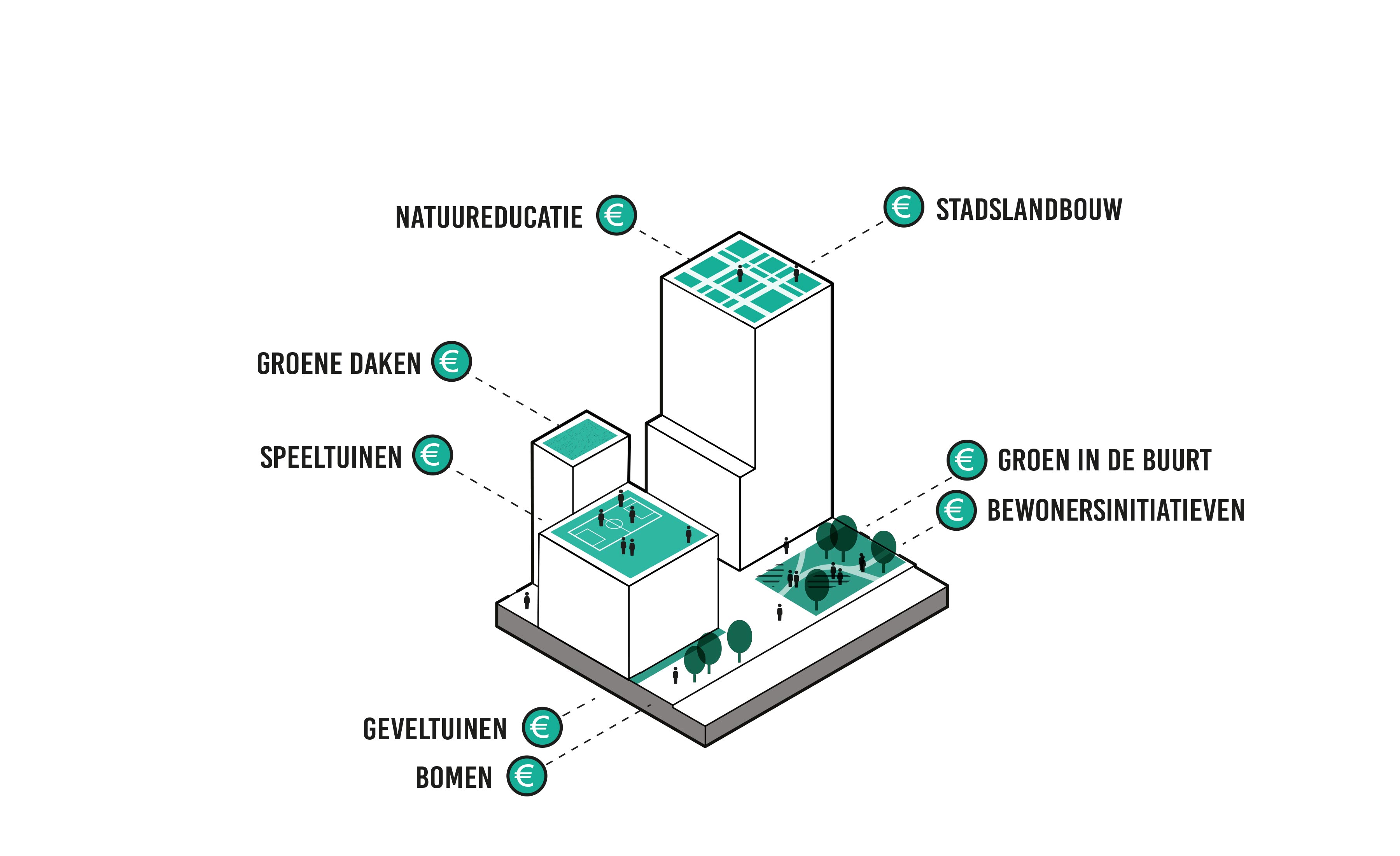

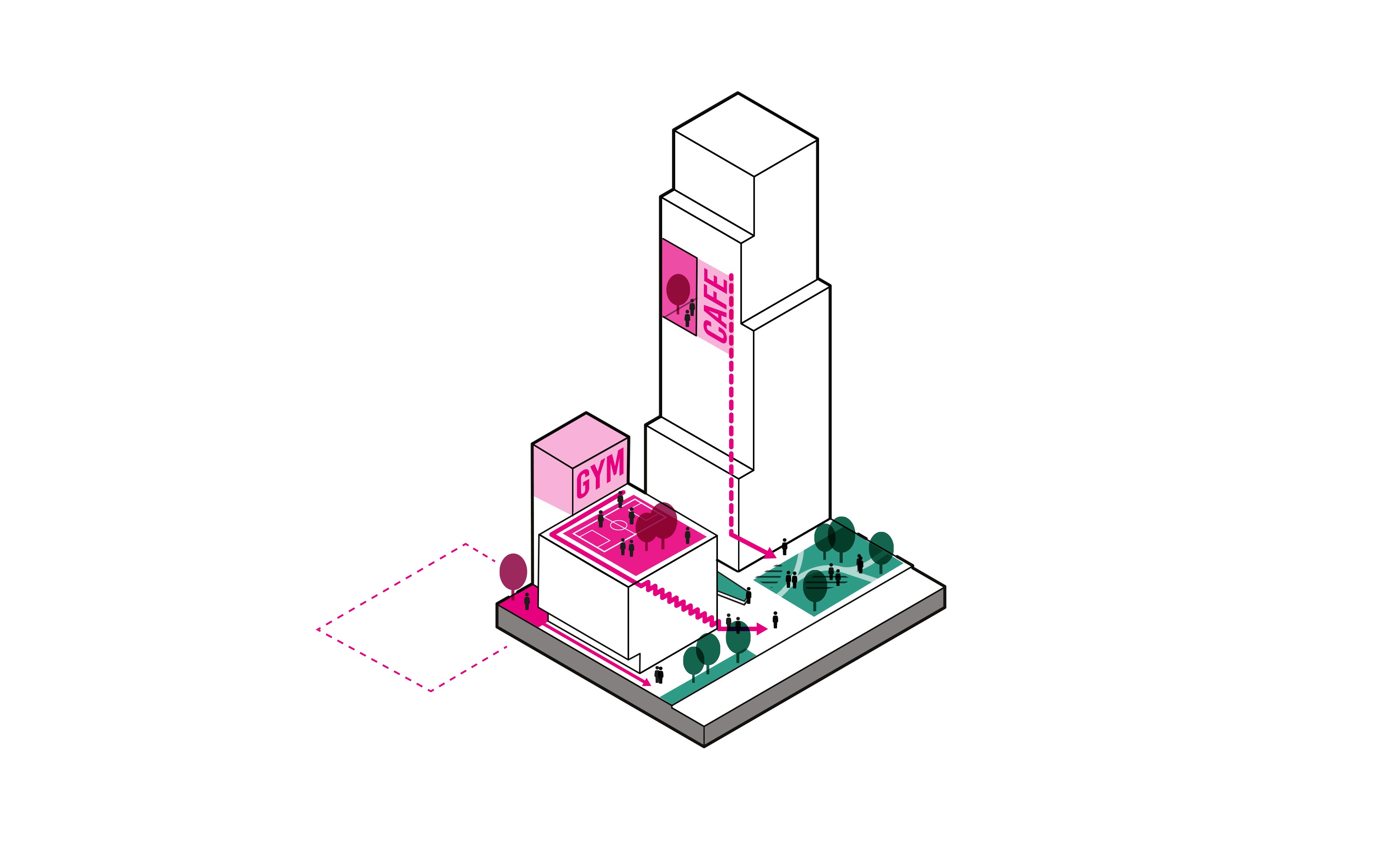
The urban jungle of the RCD
The strategy starts by greening the public space to the maximum, by greening car parks and softening overly paved spaces. A number of large public green built spaces will then be created and provided with robust programming. Examples include the current Dakpark and the green roof of the Groothandelsgebouw, which will be complemented.
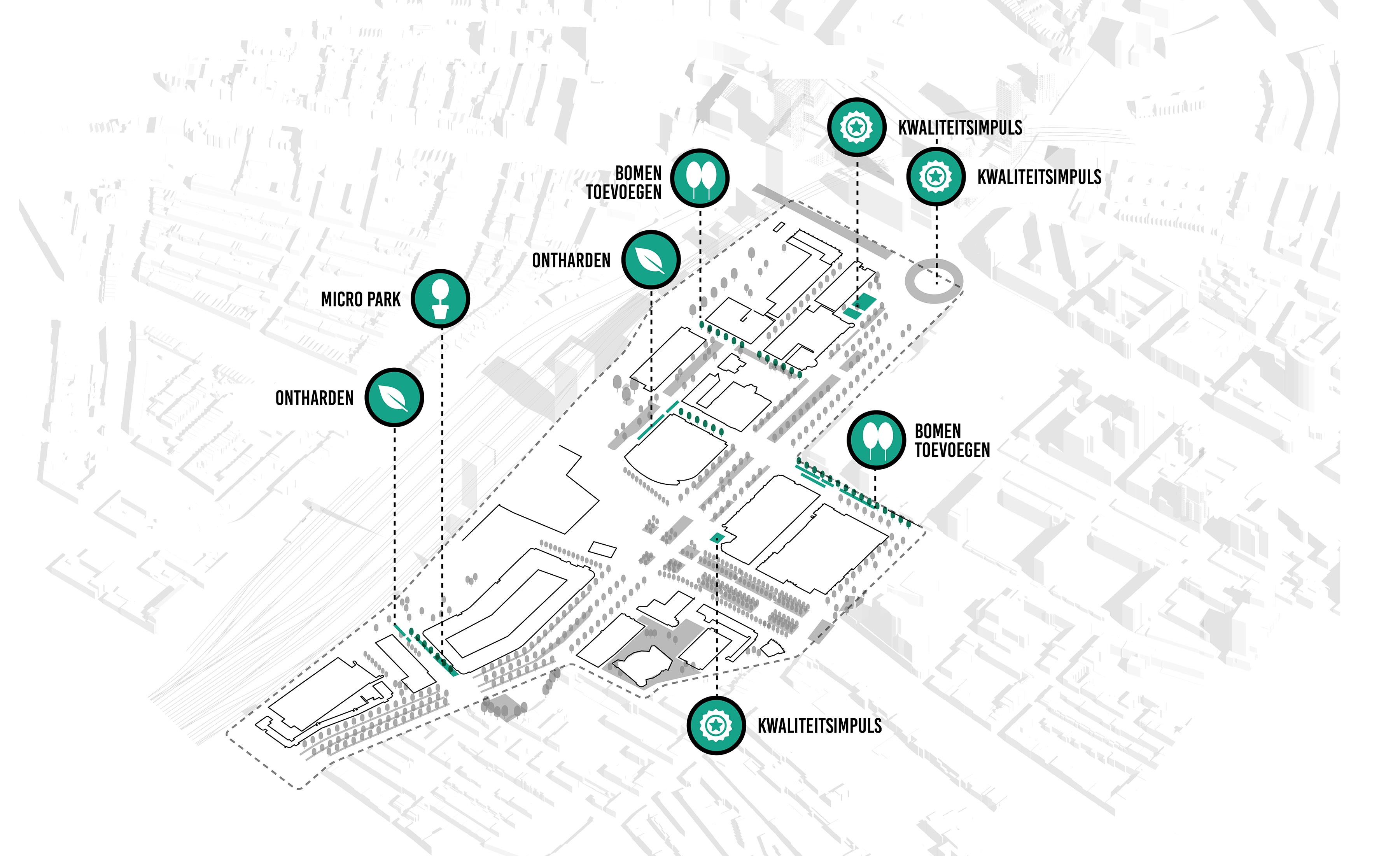
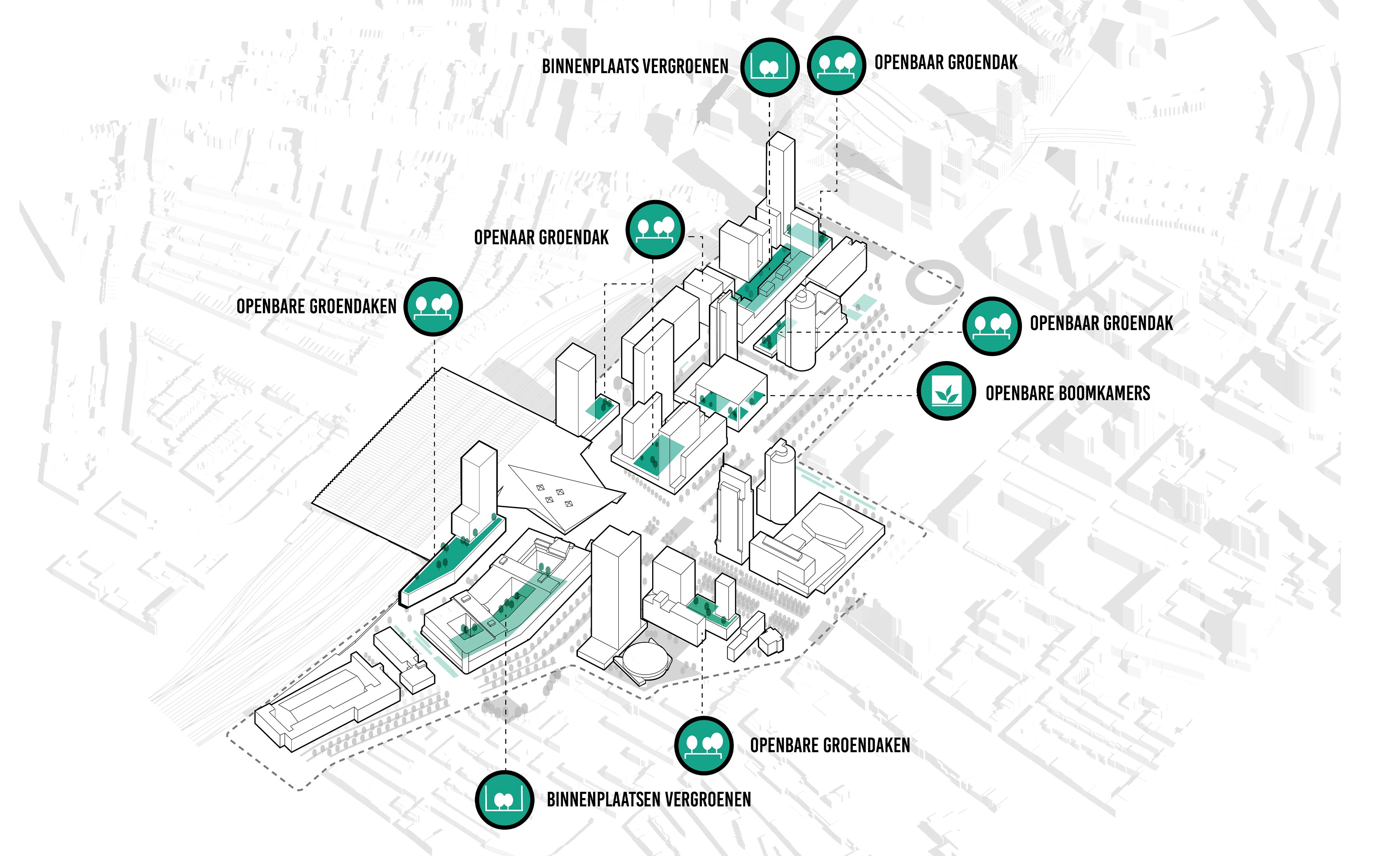
These spaces are inscribed in the urban structure by establishing good connections with the ground level, making them an inseparable part of the public space. Green roofs and facades complement the system and enhance the structure. The green spaces together form the urban jungle of the RCD, a network of green spaces that together connect to the Essenburg Park, the Rotte and the Hofbogen.
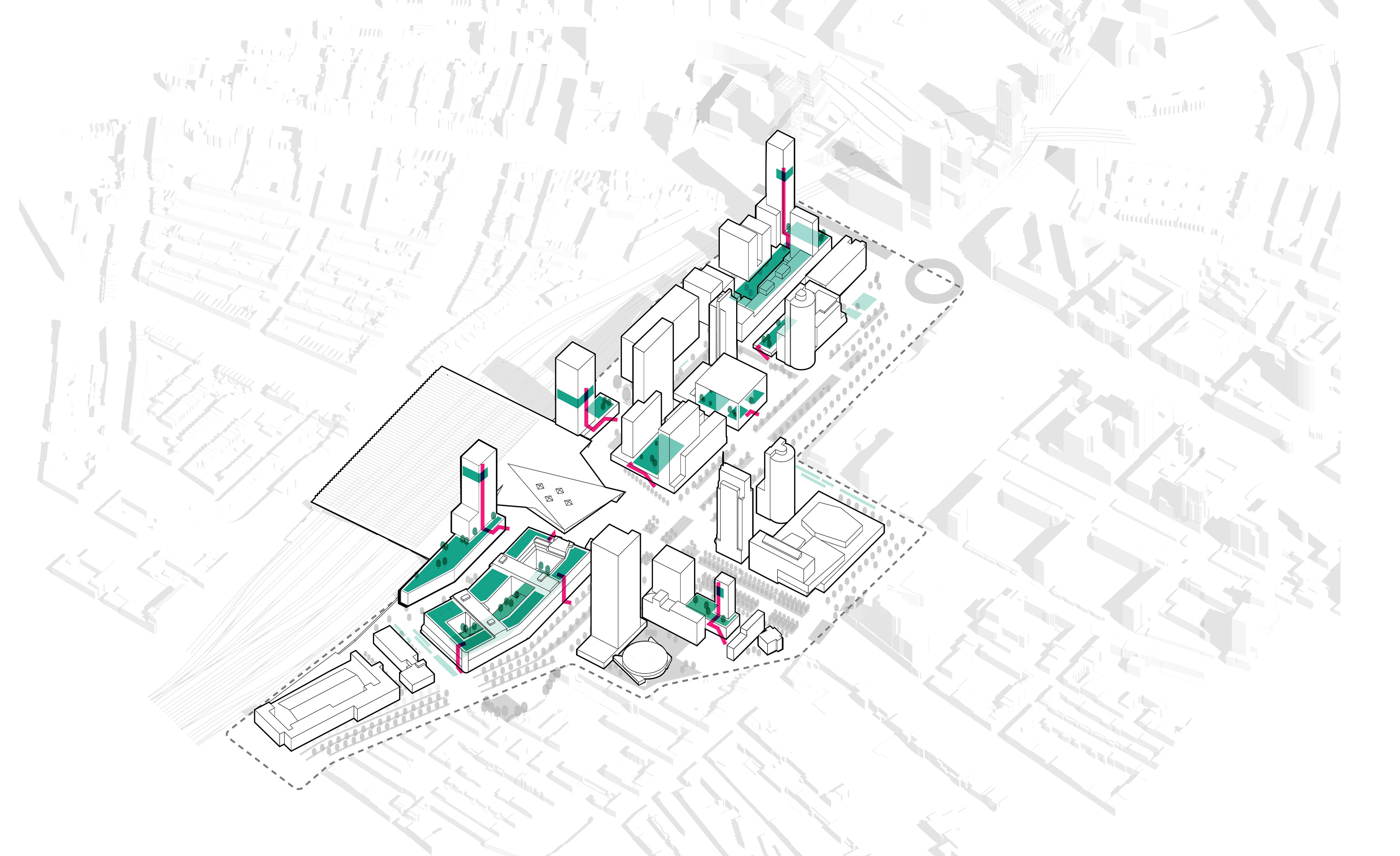

The green spaces together form the urban jungle of the RCD, a network of green spaces that together connect to the Essenburg Park, the Rotte and the Hofbogen.
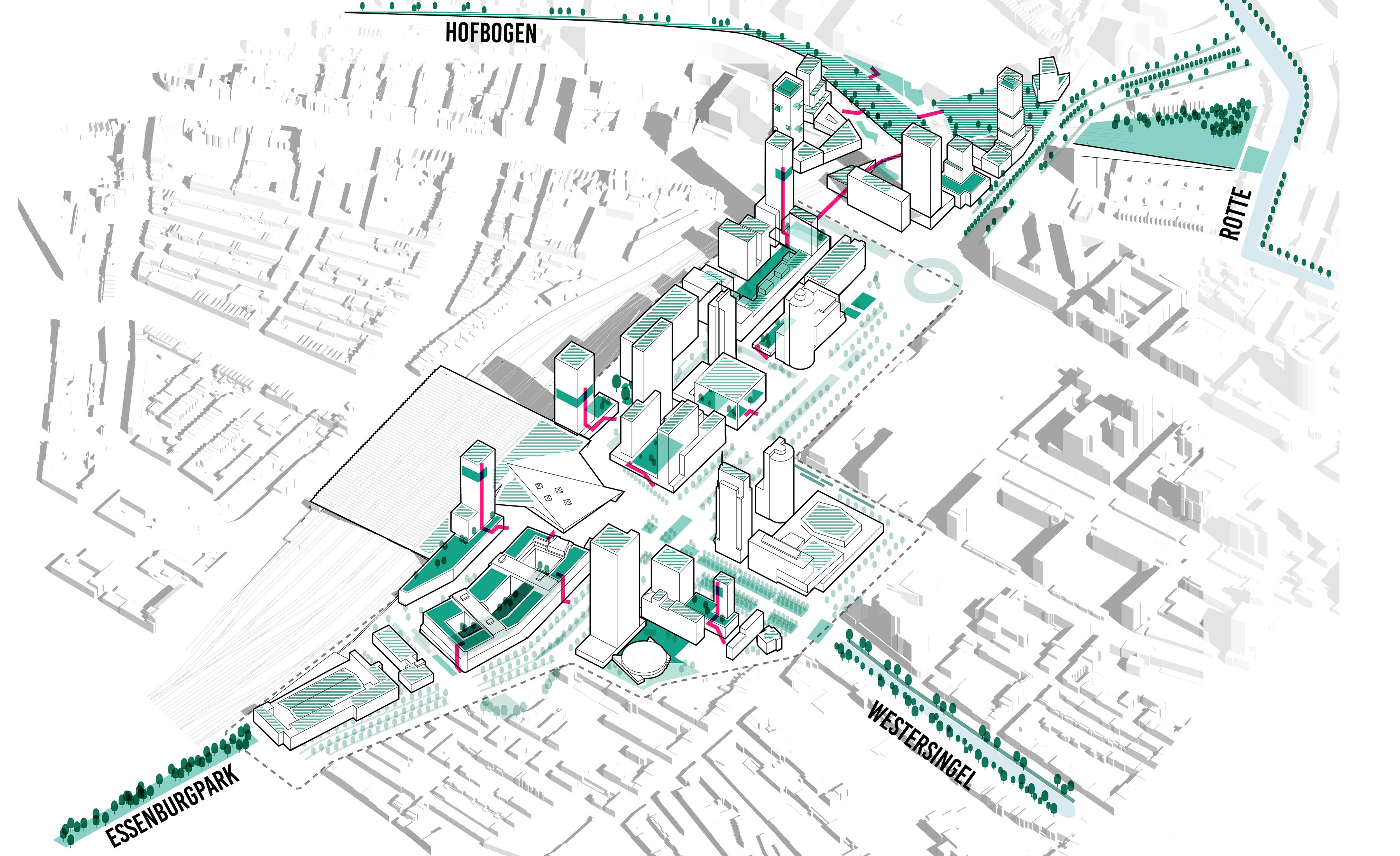
- Location
- Rotterdam
- Status
- Study
- Client
- O-Team